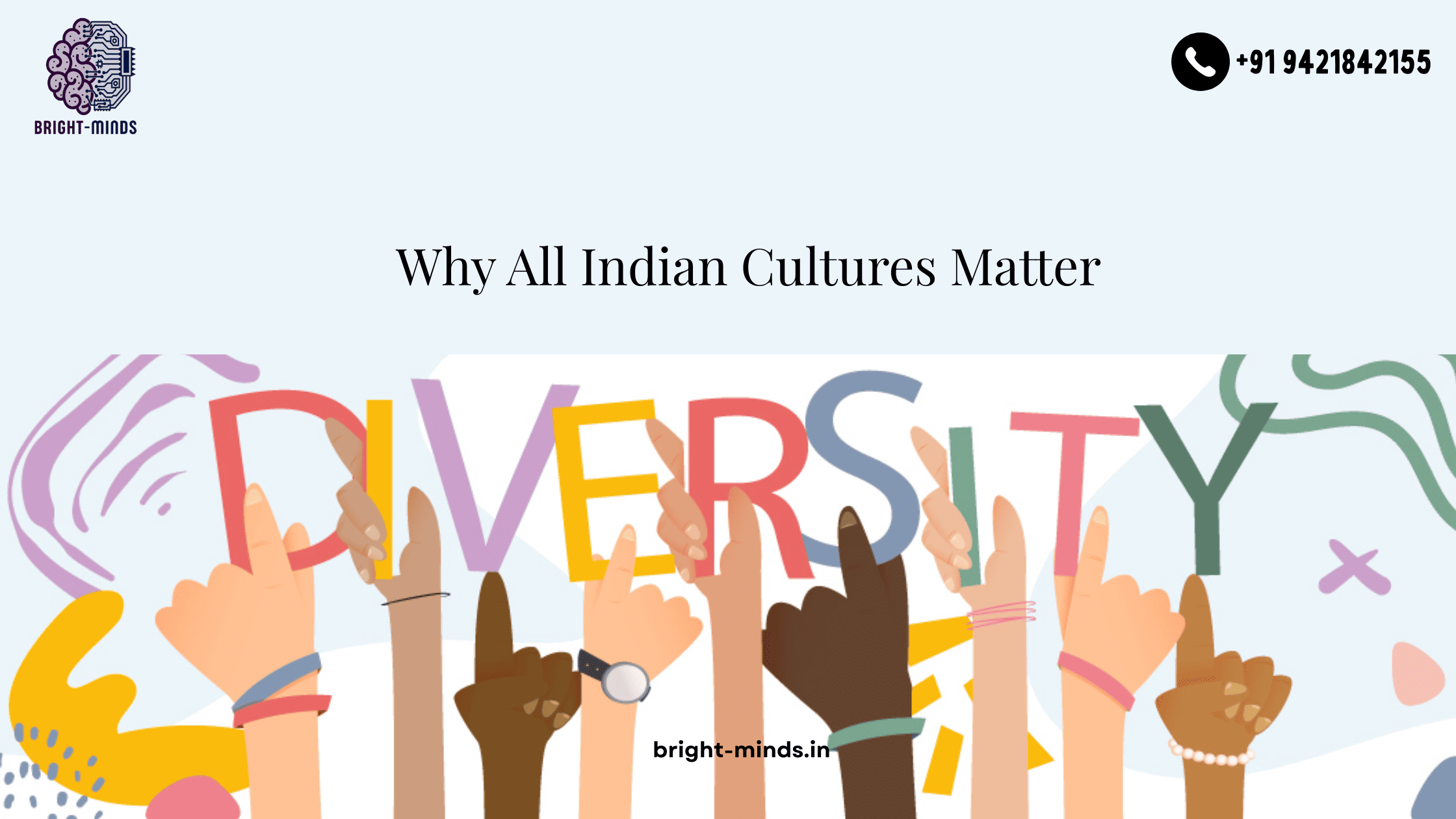A stunning tapestry of languages, festivals, cuisines, customs, and beliefs, India is a country rich in diversity. Every region of India, from the sunny beaches of Kanyakumari to the snow-capped peaks of Kashmir, has its own distinct culture that contributes to the country’s vibrancy and rich legacy. Teaching children about our cultural diversity fosters pride, curiosity, and respect in addition to being educational.
What Does “Diversity” Mean?
Diversity means difference. In India, we have differences in:
- Languages (like Hindi, Marathi, Tamil, Bengali, etc.)
- Food habits (rice in the south, wheat in the north)
- Clothing styles (saree, kurta, lungi, dhoti, and more)
- Festivals (Diwali, Eid, Christmas, Pongal, Bihu, Navratri, Onam)
But despite our differences, we all live together as one country — that’s the magic of Indian unity!
Why It’s Important to Celebrate All Cultures
- It Instills a Respect for
- Children who study other cultures get to appreciate the beauty of each tradition and realize that there is no “better” or “worse,” only differences.
- It Fosters Diversity Unity
- Each Indian state has a unique feature. Children are more proud of the nation’s diverse past when they are aware of and celebrate these differences.
- It Promotes Learning and Curiosity
- Imagine sampling a Keralan cuisine or learning a Punjabi folk dance! Learning about different cultures can be enjoyable.
- It Prevents Discrimination
- Misunderstandings are the root cause of a lot of disputes worldwide. Children who are taught to value diversity develop into compassionate, tolerant adults.
🇮🇳 Examples of India’s Colorful Culture
| Region | Language | Festival | Traditional Dress |
|---|---|---|---|
| Maharashtra | Marathi | Ganesh Chaturthi | Nauvari Saree |
| Tamil Nadu | Tamil | Pongal | Veshti & Saree |
| Punjab | Punjabi | Baisakhi | Salwar-Kameez |
| Gujarat | Gujarati | Navratri | Chaniya Choli |
| Assam | Assamese | Bihu | Mekhela Chador |
| Kashmir | Kashmiri | Eid, Navroz | Pheran |
How Kids Can Celebrate Indian Diversity
- 📚 Read folk tales from different Indian states
- 🧁 Try new dishes from various cultures with family
- 👕 Wear traditional clothes during school cultural days
- 💃 Learn different dance forms like Bharatnatyam, Bhangra, or Kathak
- 🎨 Create an art project that shows India’s cultural map
Conclusion: One India, Many Cultures
We can be linked without being alike, as India reminds us. Regardless of whether they speak Malayalam or Kannada, all Indian children are similarly Indian. Together, let’s celebrate our languages, songs, festivals, and tales.
Let’s instill in our kids a love and appreciation for India’s diversity.
You might be interested in this:-

